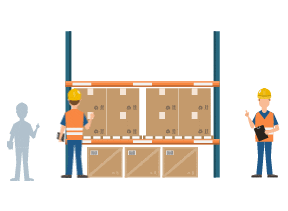
A Grade D warehouse is a type of warehouse that is the lowest in quality, efficiency, and safety in the warehousing industry. Grade D warehouses have some features that make them unattractive and unprofitable for most businesses involved in logistics, e-commerce, retail, and other sectors that require large-scale storage and distribution of goods. Some of these features are:
Unprofitable Properties:
Grade D warehouses are usually old and dilapidated buildings that have not been maintained or renovated for a long time. They have low market value and high operating costs, as they require frequent repairs and maintenance.
They also have low occupancy rates and rental yields, as they are not preferred by most customers who seek modern and reliable warehousing solutions.
Former Production Premises:
Grade D warehouses are often converted from former production premises, such as hangars, workshops, or factories that were not intended for warehousing purposes.
They have poor layout, structure, and infrastructure that do not meet the standards or requirements of efficient and safe warehousing operations. They may also have environmental or legal issues, such as pollution, contamination, or zoning violations.
Not Adapted:
Grade D warehouses are not adapted or customized to suit the specific needs or preferences of the customers or the market. They have limited or no options for technology, equipment, or amenities that are available in higher-class warehouses.
They also have rigid or unfavorable lease terms and rates, which can deter potential customers who need flexible or low-cost warehousing solutions.
Rare Equipment:
Grade D warehouses have rare or outdated equipment that can hinder the productivity, quality, and safety of the warehouse operations. They may lack essential features, such as flooring, lighting, ventilation, fire safety, and power backup systems.
They may also have insufficient or obsolete features, such as docks, elevators, ramps, pallets, forklifts, and trailers.
